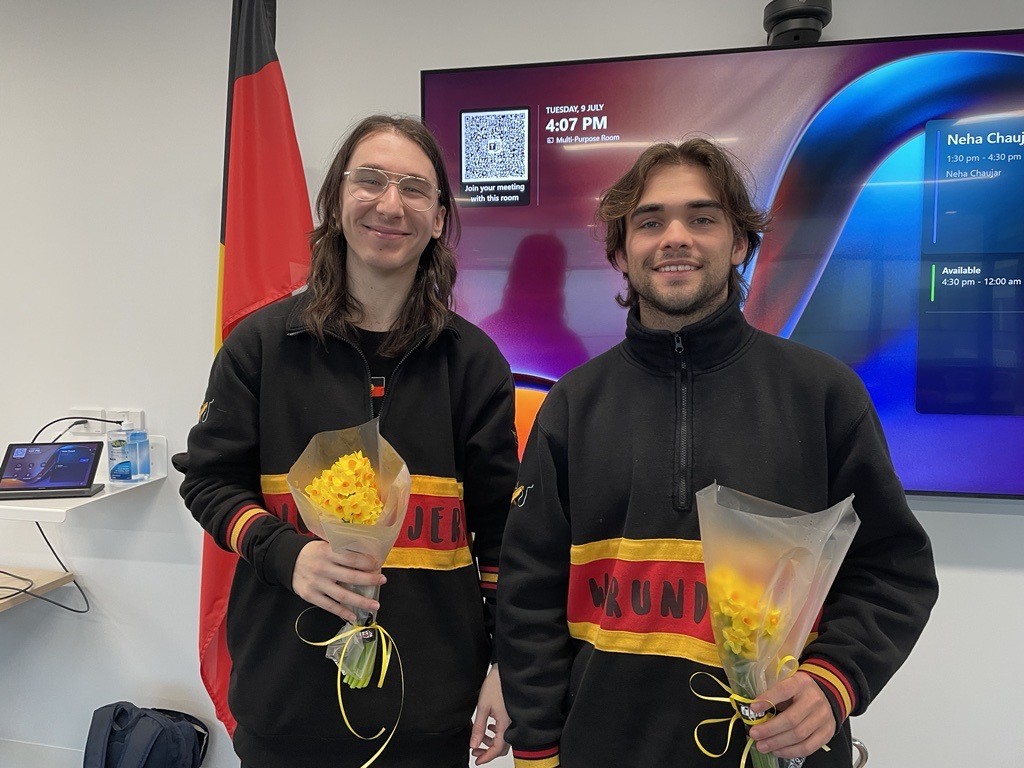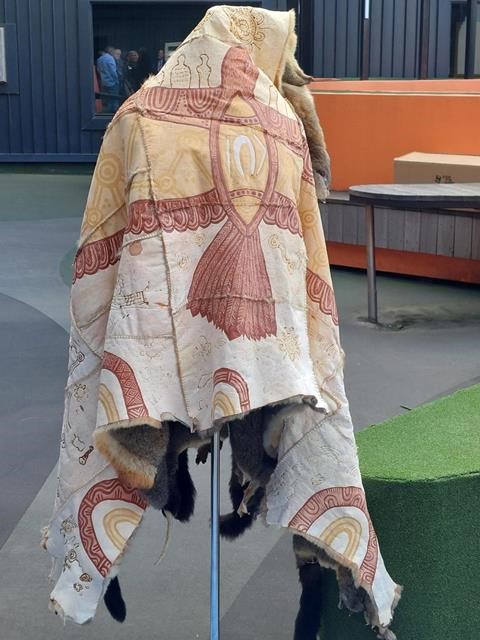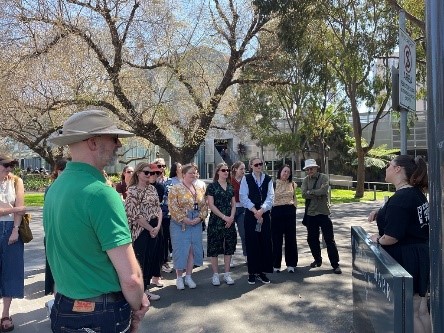
Lachlan Buxton-Green and Jack George from the Wurundjeri Woi Wurrung Cultural Heritage Aboriginal Corporation
The experience of an Aboriginal person diagnosed with cancer can be very different to that of a non-Aboriginal person.
This disparity is due to a number of reasons. Aboriginal people may have poor access to healthcare services due to financial, language, cultural or geographical barriers. Social factors such as racism and discrimination, education, employment, contact with the justice system, income and housing also affect a person’s health and wellbeing.
According to the Victorian Cancer Registry, cancer incidence and mortality has worsened for Aboriginal people living in Victoria over the past ten years, while it has stayed stable for their non-Aboriginal counterparts.
Aboriginal people living in Victoria are more likely to be diagnosed with late-stage or preventable cancers, increasing the likelihood of poor health outcomes.
As highlighted in the recently released Victorian cancer plan 2024-2028, providing accessible and culturally responsive care services for Aboriginal people is essential to close the cancer care gap. Incorporating Aboriginal ways of knowing, being and doing in Aboriginal cancer care is an important factor in this, according to the Victorian Aboriginal Community Controlled Health Organisation (VACCHO).

Launch of the possum skin cloak at Royal Melbourne Hospital
An example of this can be seen with the men’s possum skin cloak at the Royal Melbourne Hospital. Designed by local Aboriginal men as part of a program run by VACCHO, the cloak will be used during Aboriginal men’s cancer treatment at Peter MacCallum Cancer Centre to serve as a connection to Country and community.
Marissa Mulcahy, proud Kamilaroi/Gomeroi woman and First Nations Cancer Coordinator at Royal Melbourne Hospital, says making sure Aboriginal patients are aware of the supports available to them from day one is essential.
‘One of the most common responses from patients after I introduce myself and the FNCC role is relief that this role exists and that I am available throughout their journey, not just when they are an inpatient or have an appointment,’ she says.
‘When a patient does reach out, the support that I am able to offer can be quite significant,’ Marissa says. ‘This is due to the rapport that I am able to build with consultants through being a member of the cancer teams, in addition to the ability to be a consistent conduit between all services, providing seamless support at all points of a person's journey.’
Supports like these contribute to improving the level of trust that Aboriginal people have in the health services they interact with, and consequently improving cancer outcomes.
Creating culturally safe spaces
It’s the responsibility of all cancer care organisations to invest in creating a culturally safe space for Aboriginal patients as well as the Aboriginal workforce. At Cancer Council Victoria, the work to enhance staff’s cultural knowledge is ever evolving and improving.
Events run by the Reconciliation Action Plan working group provide the opportunity for staff to improve their cultural competence. Recent examples include hosting a panel discussion with the Aboriginal workforce on navigating cancer journeys, a cultural talk with the Wurundjeri Woi Wurrung Cultural Heritage Aboriginal Corporation, Aboriginal documentary screenings, a cultural walk run by the Koorie Heritage Trust, and a session with the First People’s Assembly of Victoria discussing the progress of Treaty in Victoria.

Cancer Council Victoria staff on a cultural walk with Koorie Heritage Trust
Colin Darcy, proud Narungga man and the Advisor Aboriginal Nations at Cancer Council Victoria, also runs regular self-determination workshops for all staff and engages with other organisations to support their work and the work of Aboriginal people in the cancer sector.
‘Creating a culturally safe space is creating a safe place for staff who are Aboriginal or Torres Strait Islander to work and thrive that is free of racism, stereotypes, and tokenism,’ he says.
‘Culturally safe spaces are created by implementing education in cultural safety training, anti-racism training, Aboriginal culture and history, the impacts of colonisation through cultural talks by the Traditional Owners of the country you’re on, and through art and literature, just to name a few.’ - Colin Darcy
In his role, Colin also prioritises the incorporation of Aboriginal people in healthcare.
‘Raising the capacity of a strong workforce of Aboriginal people, with the right experience to help lead and steer self-determination works, is important to creating cultural safety’, he says.
The journey to creating a culturally safe environment involves continuous improvement, and Cancer Council Victoria is one piece of the puzzle to close the health care gap for Aboriginal and Torres Strait Islander people affected by cancer.
We are currently in the process of developing the Reconciliation Action Plan 2025-27, which will provide a framework in which Cancer Council Victoria will continue to build relationships, demonstrate respect and create opportunities for Victorian Aboriginal communities.
Cancer support for Aboriginal communities
